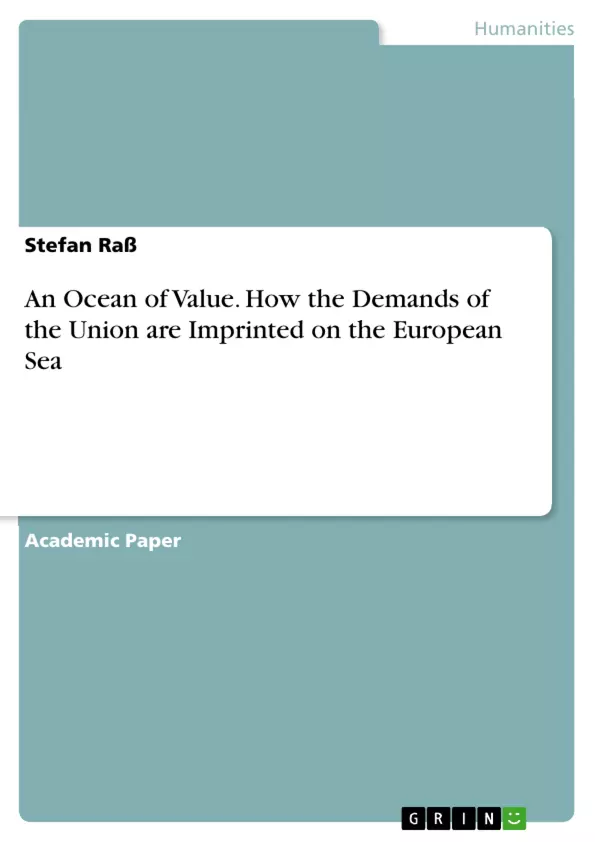Documents have the power to modify and transform the real world. This essay utilizes a material-semiotic approach in order to explore a communique from the European Commission on the Blue Growth initiative, that proposes new ways for policy maker to expand economic prosperity in the European ocean. The document demonstrates how the demands of the European Union are imprinted on the sea, making the ocean part of the ‘blue’ economy, the labor market, and the politics of a European identity. Through this process a whole ecosystem is made subject to an economic and political institution.
Inhaltsverzeichnis (Table of Contents)
- Growing into the Blue
- Approaching the Sea - Setting Sail
- Conceptualizing the Sea
- Value out of the Blue
- Plenty more fish in the sea
- Imprinting Europe on the Sea
- Forging a New Ocean
Zielsetzung und Themenschwerpunkte (Objectives and Key Themes)
This essay explores the European Commission’s Blue Growth initiative, which proposes new ways for policy makers to expand economic prosperity in the European ocean. The essay uses a material-semiotic approach to demonstrate how the demands of the European Union are imprinted on the sea, transforming it into a part of the “blue” economy, the labor market, and the politics of a European identity. The main objective is to analyze the document’s impact on the ecosystem, showcasing how an entire environment is subject to economic and political institutions.
- The value of the ocean and its role in sustaining life
- The impact of European Union demands on the ocean
- The role of documents in shaping our understanding of the natural world
- The economic and political aspects of the Blue Growth initiative
- The concept of co-modification and its implications for the ocean
Zusammenfassung der Kapitel (Chapter Summaries)
- Chapter 1: Growing into the Blue: This chapter introduces the importance of the ocean as a delicate ecosystem and its significance for Earth's balance. It explores the European Union's Horizon 2020 funding program and its focus on research, innovation, and economic growth. The Blue Growth initiative is presented as Europe's long-term strategy to secure and expand jobs and value within the “blue economy.”
- Chapter 2: Approaching the Sea - Setting Sail: This chapter establishes the main research question: how are the demands of the European Union imprinted on the sea in the Blue Growth document? It focuses on three key aspects: expanding the European Union's gross value added, increasing the European labor force, and stabilizing and expanding the Union's authority. The chapter emphasizes the transformative capacity of documents, suggesting that Blue Growth can establish new targets for intervention in the European ocean.
- Chapter 3: Conceptualizing the Sea: This chapter provides the theoretical framework for the analysis, introducing material-semiotics and the concept of co-modification. It challenges the perception of the Blue Growth document as merely informative, highlighting the social construction of value and how documents can shape our understanding of the natural world.
Schlüsselwörter (Keywords)
The essay focuses on key themes such as the Blue Growth initiative, the European Union, the “blue economy,” material-semiotics, co-modification, value construction, and the relationship between documents and the natural world. The essay examines how European demands are imprinted on the ocean through policy documents, influencing economic development, labor markets, and the politics of identity.
- Citation du texte
- M.A. Stefan Raß (Auteur), 2019, An Ocean of Value. How the Demands of the Union are Imprinted on the European Sea, Munich, GRIN Verlag, https://www.grin.com/document/1001851



